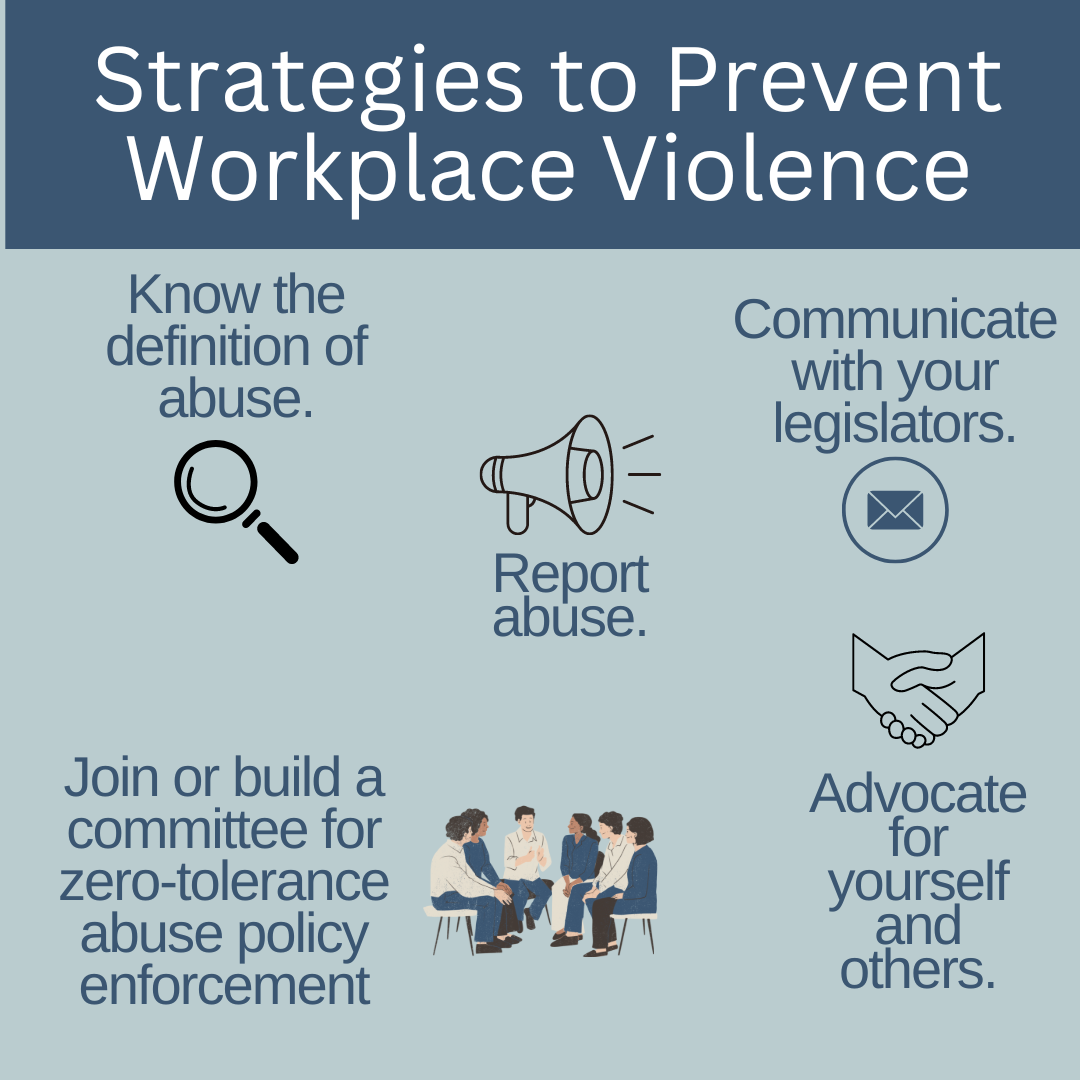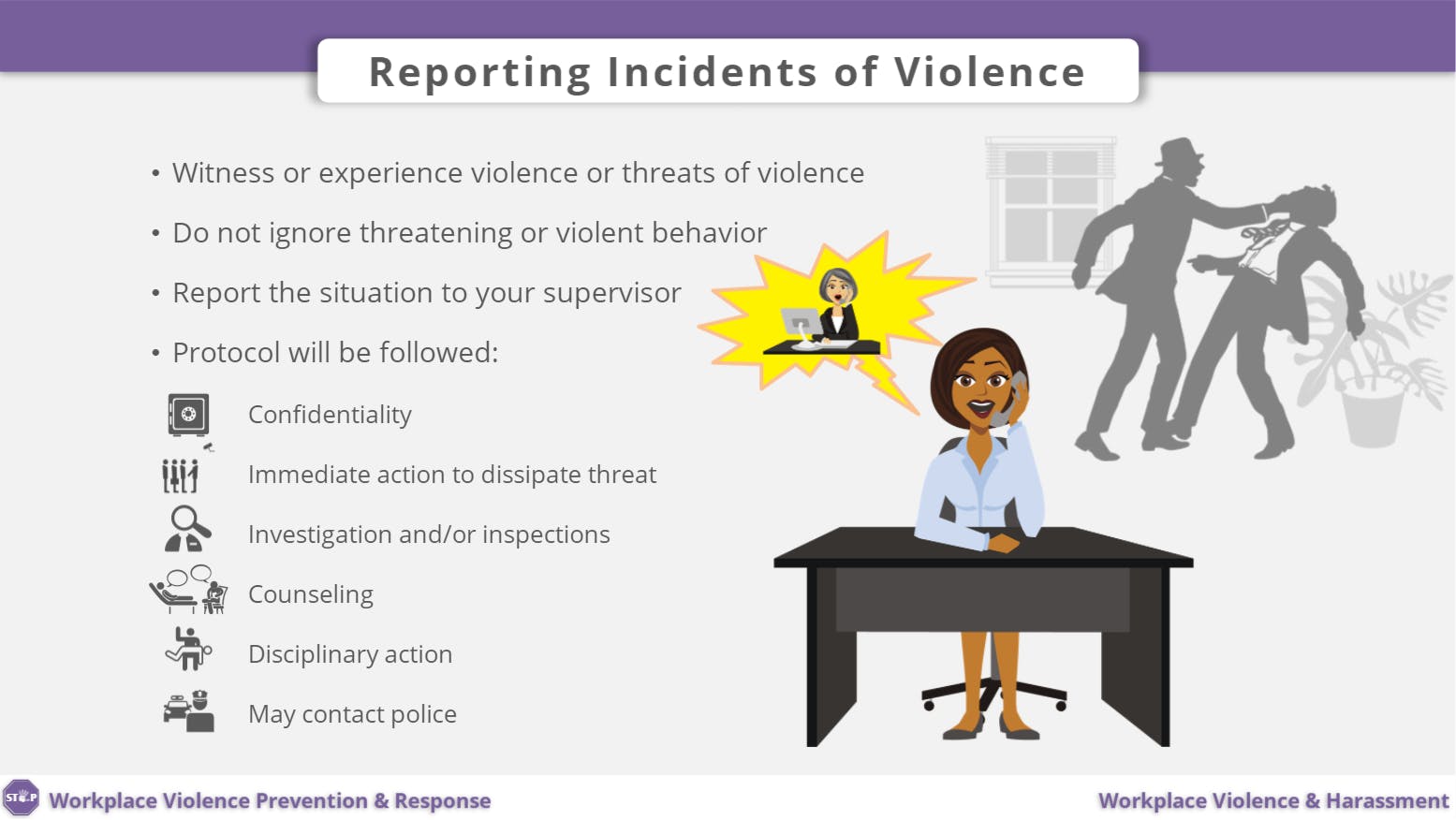Cutting-edge Devices and Resources for California Workplace Violence Prevention Success
Cutting-edge Devices and Resources for California Workplace Violence Prevention Success
Blog Article
The Duty of Worker Training and Recognition in Enhancing Work Environment Physical Violence Avoidance Initiatives Across Different Industries
The assimilation of staff member training and understanding into work environment physical violence avoidance efforts is progressively recognized as an essential element of organizational safety throughout diverse sectors. By carrying out targeted training programs, businesses can successfully encourage their workforce to identify and resolve possible hazards before they intensify. The performance of these campaigns frequently hinges on a number of important aspects that differ by market, increasing essential questions about the flexibility of training techniques and their real-world influence. Understanding these subtleties might disclose approaches that can dramatically enhance safety protocols and staff member self-confidence in high-risk atmospheres.
Importance of Training Programs
In today's vibrant work setting, the importance of training programs can not be overstated, particularly in the context of work environment violence avoidance. These programs act as a fundamental aspect in cultivating a protected and secure office society. By equipping workers with the knowledge and skills essential to identify, mitigate, and reply to prospective hazards, organizations can foster a setting that prioritizes safety and security and wellness.
Efficient training programs do more than just instruct; they encourage staff members to acknowledge caution signs of violence, understand the procedures for reporting occurrences, and develop strategies to de-escalate possible disputes. Additionally, they instill a sense of cumulative duty among staff, urging proactive engagement in preserving a risk-free workplace.
Financial investment in training not only improves employee understanding however likewise shows an organization's commitment to guarding its workforce. This positive approach can lead to decreased cases of office violence, reduced absenteeism, and enhanced worker spirits. Ultimately, detailed training programs are essential to developing a resistant business society that values safety and advertises a healthy job setting, thus decreasing the risk of physical violence and its associated effects.
Key Parts of Effective Understanding
A thorough awareness program includes several essential elements that are necessary for successfully protecting against work environment physical violence. Initially, clear communication of plans and treatments connected to office physical violence is vital. Staff members need to be educated about the organization's position on violence and the specific procedures in position for reporting events.
Second, training sessions must incorporate practical scenarios that employees may encounter. This sensible technique aids employees recognize warning indicators of possible violence and equips them with the essential skills to de-escalate tense situations. Third, promoting an encouraging office culture is vital; employees should really feel empowered to speak out without anxiety of retaliation.
In addition, ongoing education and learning is very important to keep understanding appropriate and fresh. Regular refresher courses and updates on emerging risks can boost employees' vigilance and readiness. Integrating comments devices allows staff members to share their understandings and experiences, which can lead to continual enhancement of recognition campaigns. By integrating these components, organizations can create a durable structure for stopping work environment violence, eventually contributing to a more secure and more efficient atmosphere for all staff members.
Industry-Specific Training Strategies
Effective workplace violence prevention training should be tailored to the special challenges and risks encountered by certain industries. Health care environments require training that addresses the high possibility of encounters with hostile patients or site visitors. Programs should concentrate on de-escalation techniques, identifying caution indications of prospective violence, and making certain personnel realize the significance of reporting occurrences.
In comparison, retail setups might encounter various hazards, such as break-in or consumer disagreements. Training in these settings ought to stress situational awareness, action methods throughout emergency situations, and the significance of safeguarding cash and prized possessions.
Manufacturing and building sectors offer their very own threats, commonly related to interpersonal disputes or unsafe working conditions. Training in these markets should consist of methods for conflict resolution, promoting a society of safety, and urging open communication amongst employees.
Additionally, company offices might need training fixated avoiding harassment and bullying, fostering a respectful workplace society, and applying clear coverage mechanisms. Each industry has to not just identify its details vulnerabilities yet also adjust training materials to reverberate with the labor force efficiently, ensuring that staff members feel equipped and empowered to handle prospective fierce scenarios.
Determining Educating Effectiveness
Examining the influence of office violence avoidance training is vital for making certain that employees are adequately prepared to handle possible risks. To accurately determine training efficiency, organizations must carry out both quantitative and qualitative evaluation techniques. Pre- and post-training studies can determine changes in staff member expertise, mindsets, and behaviors concerning workplace physical violence. These studies ought to concentrate on certain training purposes to guarantee positioning with the company's objectives.
Furthermore, sensible assessments, such as role-playing circumstances or simulations, can offer insights right into just how well employees use found out skills in real-life situations. Keeping an eye on occurrence reports before and after training can also act as an indication of performance, as a decrease in occurrences may mirror enhanced employee preparedness.
Furthermore, responses from participants ought to be systematically accumulated to identify areas for renovation in training material and delivery. Conducting follow-up look at here now evaluations at normal intervals aids suffer awareness and reinforces training concepts over time - california workplace violence prevention. By employing a comprehensive strategy to determining training effectiveness, companies find more info can make sure that their office violence avoidance initiatives cultivate a more secure environment and boost total worker wellness
Structure a Society of Safety

Training plays a crucial role in this cultural shift. Routine, detailed training sessions educate employees about acknowledging indication of work environment violence and the suitable responses. Furthermore, motivating open interaction permits staff members to voice worries without anxiety of vengeance, promoting collective duty for safety.
Additionally, incorporating safety right into everyday procedures guarantees that it ends up being a shared value rather than a mere compliance issue. This consists of routine safety drills, updates on policies, and feedback systems that include workers in safety and security conversations and enhancements.
Inevitably, a robust society of safety not just alleviates the risks of office violence yet likewise improves worker spirits and performance. By fostering a setting where safety and security is an essential concern, companies can create resistant work environments that sustain both individual well-being and collective success.
Conclusion
In final thought, staff member training and recognition are crucial components in the avoidance of office violence throughout numerous markets. Efficient training programs, tailored to certain industry requirements, improve workers' ability to react and recognize to possible threats.

Normal, thorough training sessions educate employees regarding acknowledging warning indicators of office physical violence and the appropriate feedbacks.In final thought, employee training and awareness are crucial elements in the avoidance of office violence throughout various sectors.
Report this page